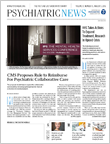The Department of Health and Human Services (HHS) in July took steps to combat the opioid epidemic by issuing a rule expanding access to buprenorphine treatment and proposing elimination of a possible financial incentive to overprescribe opioids.
In other actions, HHS will require Indian Health Service practitioners to check state Prescription Drug Monitoring Program (PDMP) databases before prescribing opioids. The agency also announced the start of more than a dozen new research studies on pain treatment and opioid misuse.
The department’s new rule on buprenorphine treatment increases from 100 to 275 the number of patients a specially trained physician can treat. Addiction specialists and those who practice in a qualified health setting will be eligible for the higher patient limit after they have held a Drug Enforcement Administration waiver for the 100-patient limit for at least a year.
“These are reasonable steps forward, but the real question is how to get more trained prescribers to take more patients,” said Frances Levin, M.D., chair of APA’s Council on Addiction Psychiatry and a professor and chief of the Division of Substance Abuse at Columbia University and the New York State Psychiatric Institute.
Increasing the waiver limit is not enough, she said in an interview. Many physicians, possibly a majority, now holding waivers do not treat the maximum number of patients allowed, and some do not treat any.
Even when trained, many are not comfortable using buprenorphine or working with patients with drug use disorders, she said. Other problems like insurance barriers, the lack of staff resources, or the inability to provide or refer to psychotherapy hamper broader use of buprenorphine.
Drug monitoring programs, which require physicians to check a database to see what other drugs a patient may be taking, have been a state responsibility and have proven generally useful, said Levin.
“I find it extremely helpful not just for monitoring use of opioids but also for seeing what drugs have been prescribed by other doctors that the patient hasn’t told me about,” she said.
In 2014, the most recent year for which complete statistics are available, 47,055 people died of drug overdoses in the United States, of which 28,647 (61 percent) involved opioids. HHS announced its opioid initiative in March. The program focused on improving prescribing practice, expanding use and access to medication-assisted treatment, and increasing the use of naloxone to reverse overdoses (
Psychiatric News, May 6).
President Obama has requested $1.1 billion over the next two fiscal years to finance those goals.
The agency also set forth steps to continue its research plan to study more about the epidemiology of opioid use, advance knowledge of pain and addiction, and find new treatments.
HHS will also eliminate use of Hospital Consumer Assessment of Healthcare Providers and Systems (HCAHPS) survey questions on pain as a criterion for Medicare payment. To keep patient pain management satisfaction scores high, some clinicians have felt pressure to overprescribe opioids. Now, hospitals will still ask patients about pain management, but the answers will not affect payments.
APA played an important role in shaping the final rule on limits for patients treated with buprenorphine by one physician.
“We welcome the final rule raising the cap on buprenorphine patients because it balances the needs for access to quality care and safety,” said APA CEO and Medical Director Saul Levin, M.D., M.P.A. “APA had provided feedback to SAMHSA, and we are encouraged that the agency followed the spirit of our recommendations.”
The American Academy of Addiction Medicine and the American Osteopathic Academy of Addiction Medicine joined with APA in offering comments to HHS about the buprenorphine limit. ■
More information on the Department of Health and Human Services’ opioid initiative can be accessed
here.

